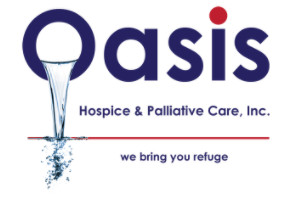When a loved one enters hospice care, it’s natural to feel uncertain about what lies ahead. One of the most helpful things you can do as a caregiver or family member is to understand the path hospice care typically follows. Hospice is divided into four stages, each designed to meet the changing needs of the patient and provide ongoing support to families.
Hospice care is an important and often misunderstood form of medical care for individuals who are terminally ill. Knowing the stages of hospice can help families, caregivers, and healthcare professionals understand the service better and make informed decisions about end-of-life care.
In this article, we’ll provide an overview of the four stages of hospice and explain how each stage plays a role in providing comfort and support to those who are facing a terminal illness. What are the four stages of palliative care?
Understanding Hospice Care

The first stage of hospice care is evaluation. During this stage, the patient and their family meet with the hospice team to discuss their goals and expectations for care. The team assesses the patient’s physical, emotional, and spiritual needs in order to create a personalized plan of treatment.
The goal of this plan is to provide comfort and preserve quality of life while allowing the patient to remain as independent as possible. The plan will include medications and therapies that address any physical symptoms or discomfort that may arise throughout their journey with hospice care.
Understanding hospice care is essential for making informed decisions about end-of-life planning for yourself or a loved one.
Eligibility Criteria For Hospice Care in Illinois.
While many patient are eligible for hospice and palliative care, there is a criteria to determine if a patient is a perfect candidate for the service. Here is what to consider;

Physical Eligibility Criteria
One such criterion is physical eligibility, which requires individuals to fit into one of four primary stages of hospice.
The first stage of hospice is referred to as ‘curative intent’ and is designed for those who are not ready to accept palliative or end-of-life care.
The second stage, ‘palliative intent’, is reserved for those whose conditions have become too severe for curative treatments.
The third stage is ‘comfort measure only’, where individuals are no longer responding positively to curative or palliative treatments.
Finally, there is the fourth stage which includes end-of-life care and support for family members after someone has passed away.
Emotional Eligibility Criteria
Emotional eligibility criteria also need to be taken into consideration. This includes assessing whether or not the patient is psychologically ready to accept end-of-life care and has a strong support system in place.
Counseling is often offered in order to ensure that both the patient and their family members are emotionally and mentally prepared for the changes that come with hospice care.
Pre-Hospice Care
When a person is eligible for hospice care and palliative care, there are four stages of the process. The first stage is pre-hospice care, which takes place before an individual enters a hospice facility or receives services in their home.
Pre-hospice care focuses on providing support to the patient and family both medically and emotionally:
- Understanding the patient’s condition and prognosis
- Ensuring that medical needs are met
- Connecting with hospice resources
- Providing emotional support to the patient and family
The team of professionals involved in pre-hospice care can include doctors, nurses, social workers, counselors, chaplains, and other health providers.
Active Hospice Care
Active Hospice Care marks the beginning of the hospice journey. It is designed to provide comfort and support to those who are facing life-limiting illnesses. It addresses the physical, emotional, spiritual and social needs of patients and their families with compassionate care.
During this stage, hospice staff works closely with the primary physician to ensure that symptoms are managed properly and pain is controlled. The goal is to help patients live as fully as possible while they remain in their home environment or another setting outside a hospital.
The third stage is Respite Care. This provides temporary relief for caregivers who may need a break from their responsibilities for a few days or weeks at a time.
An interdisciplinary hospice care providers coordinates all aspects of this care, which can be provided in either an inpatient or outpatient setting depending on the needs of the patient and family members.
Respite Care
Respite care offers temporary relief from the daily responsibilities associated with caring for someone with a terminal illness or disability. It can be provided in an inpatient setting by allowing another qualified individual to temporarily take over the role of primary caregiver for a few days or weeks at a time.
Respite care can be beneficial not only for the patient but also for their family and caregivers by providing them with some much-needed rest and relaxation while still ensuring that their loved one’s needs are being met.
After completing respite care, it is important to ensure that all necessary arrangements have been made before transitioning into continuous care.
Continuous Care
Hospice care is a four-stage journey that offers comfort and support to those nearing the end of life. A few key points to keep in mind:
- Nurturing physical comfort by providing medications for pain relief
- Offering counseling services for the patient and their loved ones
- Assisting with daily activities such as bathing and dressing
- Creating a safe environment within the home
This stage is focused on creating peace of mind for both the patient and their loved ones. The attentive team of professionals strive to ensure that everyone involved is comfortable with the process.
Frequently Asked Questions
Is Hospice Care Covered By Insurance?
Yes, hospice care is often covered by insurance. Medicare, Medicaid, and most private health insurance companies cover at least some of the costs associated with hospice care.
What Is The Average Length Of Time Spent In Hospice Care?
On average, individuals receiving hospice care spend an estimated 70 days in hospice care. This can vary significantly depending on the individual’s health and situation.
What Are The Typical Costs Associated With Hospice Care?
The typical costs associated with hospice care vary greatly depending on the type of services and level of care needed. Generally, hospice care is covered by Medicare and private insurance plans.
How Do I Know If A Loved One Is Ready For Hospice Care?
It’s important to assess the physical, emotional, and spiritual needs of your family member before making a decision.
- Have they stopped responding to traditional treatments?
- Are they able to communicate their wants and needs?
- Is the quality of life becoming more difficult?
Once these questions are answered honestly, you will be better equipped to make an informed decision and chart a path towards providing comfort and care for your family member.
What Kind Of Support Is Available For Families Going Through Hospice Care?
Families going through hospice care can receive a wide range of support. This includes emotional and spiritual support to help the family cope, as well as physical care to help meet the needs of their loved one.
In-Home Hospice and Palliative Care in Chicago, IL
At Oasis Hospice Care, we’re honored to be a trusted source of comfort, compassion, and expert care for families across Chicago, Illinois. Whether you need in-home hospice care focused on end-of-life support or palliative care to manage serious illness, our dedicated team in Crestwood, IL is here to walk with you every step of the way.
We bring peace, dignity, and personalized attention right to your doorstep, ensuring your loved one receives the care they deserve in the place they feel most at home. Call us today at 708-564-4838 to learn how we can support you and your family.

